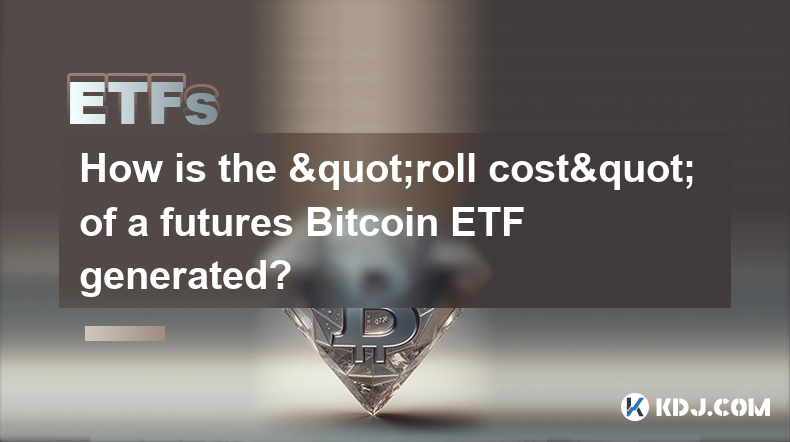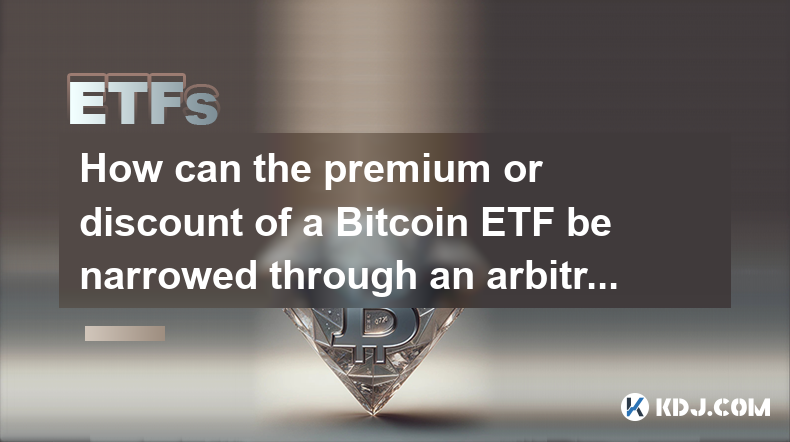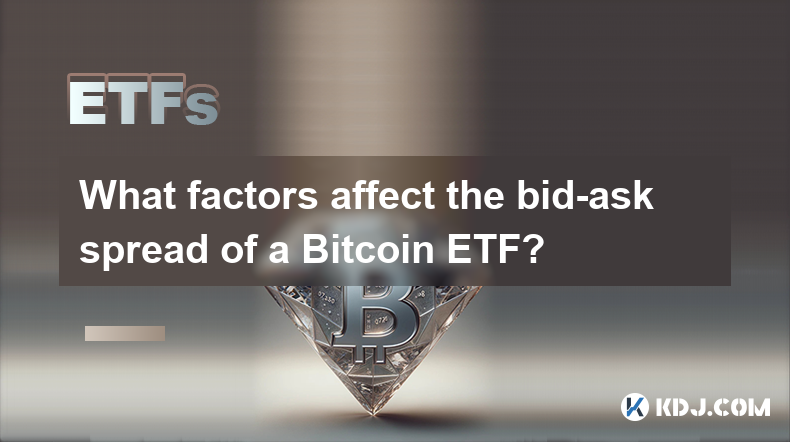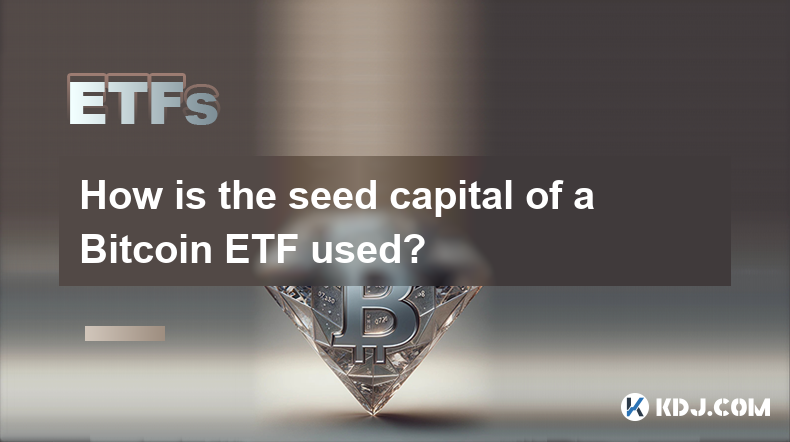-
 Bitcoin
Bitcoin $85,181.4576
0.55% -
 Ethereum
Ethereum $1,600.7372
0.98% -
 Tether USDt
Tether USDt $0.9999
0.01% -
 XRP
XRP $2.0883
0.92% -
 BNB
BNB $592.4828
0.74% -
 Solana
Solana $138.7084
2.67% -
 USDC
USDC $0.9999
0.00% -
 Dogecoin
Dogecoin $0.1590
2.50% -
 TRON
TRON $0.2418
-1.18% -
 Cardano
Cardano $0.6301
2.59% -
 UNUS SED LEO
UNUS SED LEO $9.3588
1.36% -
 Chainlink
Chainlink $12.8630
1.65% -
 Avalanche
Avalanche $19.5072
1.68% -
 Stellar
Stellar $0.2468
2.21% -
 Toncoin
Toncoin $2.9911
-0.01% -
 Shiba Inu
Shiba Inu $0.0...01220
2.08% -
 Hedera
Hedera $0.1663
0.29% -
 Sui
Sui $2.1506
1.41% -
 Bitcoin Cash
Bitcoin Cash $338.3770
2.53% -
 Hyperliquid
Hyperliquid $18.1017
6.61% -
 Polkadot
Polkadot $3.7270
1.24% -
 Litecoin
Litecoin $76.2040
0.93% -
 Dai
Dai $1.0000
0.02% -
 Bitget Token
Bitget Token $4.4577
2.21% -
 Ethena USDe
Ethena USDe $0.9992
0.02% -
 Pi
Pi $0.6468
6.09% -
 Monero
Monero $212.8810
-1.80% -
 Uniswap
Uniswap $5.2693
1.19% -
 Pepe
Pepe $0.0...07270
1.33% -
 OKB
OKB $50.7701
1.10%
Is Bitcoin spot trading suitable for novices?
Bitcoin spot trading, while offering direct ownership, presents significant risks for novices due to volatility and potential exchange security breaches; beginners should prioritize risk assessment, education, and a well-defined trading strategy before investing.
Mar 03, 2025 at 11:36 am

Is Bitcoin Spot Trading Suitable for Novices?
Key Points:
- Understanding Bitcoin Spot Trading: A detailed explanation of what spot trading is, contrasting it with other forms of Bitcoin trading like futures and derivatives. This section will highlight the inherent risks and rewards specifically for beginners.
- Assessing Risk Tolerance: A comprehensive exploration of risk assessment for novice traders. This will include identifying personal financial limitations, understanding potential losses, and establishing realistic expectations regarding profit.
- Essential Knowledge & Skills: A breakdown of the fundamental knowledge and skills required for successful Bitcoin spot trading. This includes understanding market mechanics, order types, technical analysis basics, and the importance of fundamental analysis concerning Bitcoin's underlying technology and adoption.
- Choosing a Reputable Exchange: Guidance on selecting a safe and reliable cryptocurrency exchange tailored to beginners. This will encompass factors such as security measures, user interface, fees, and regulatory compliance.
- Developing a Trading Strategy: A step-by-step guide to creating a simple yet effective trading strategy for beginners. This will emphasize the importance of patience, discipline, and avoiding impulsive decisions.
- Managing Risk and Emotions: Strategies for managing risk and emotional responses during trading. This section will address common psychological pitfalls that can lead to losses and offer techniques for maintaining a rational approach.
- Understanding Bitcoin Spot Trading:
Spot trading, in the context of cryptocurrencies like Bitcoin, is the simplest form of trading. It involves buying Bitcoin at the current market price with the intention of selling it later at a higher price to profit from the price difference. Unlike futures or derivatives trading, where you speculate on the future price of Bitcoin without actually owning it, spot trading entails direct ownership of the Bitcoin. This direct ownership gives you more control but also exposes you to greater risk. For novices, understanding this fundamental difference is crucial.
The inherent risk in Bitcoin spot trading stems from its volatility. Bitcoin's price can fluctuate dramatically in short periods, meaning your investment could lose significant value quickly. Unlike traditional assets with more predictable price movements, Bitcoin's price is influenced by numerous factors, including regulatory changes, technological developments, market sentiment, and macroeconomic conditions. These unpredictable factors make it challenging even for experienced traders, let alone novices, to consistently profit.
Moreover, the decentralized nature of cryptocurrencies introduces additional risks. While exchanges offer custodial services, there’s always a risk of exchange hacks or security breaches, leading to the loss of your Bitcoin. Furthermore, the lack of regulatory oversight in many jurisdictions adds another layer of uncertainty. Understanding these risks is paramount before venturing into Bitcoin spot trading. Novices must realistically assess their risk tolerance and only invest an amount they can afford to lose completely. This is not just a cliché; it's a crucial step in protecting yourself from potential financial ruin. Beginners should start with small amounts to gain experience and gradually increase their investment as their understanding and confidence grow. Ignoring this fundamental aspect can lead to devastating consequences. Thorough research and a comprehensive understanding of the potential downsides are essential before considering any investment.
- Assessing Risk Tolerance:
Before engaging in Bitcoin spot trading, a novice must honestly assess their risk tolerance. This involves understanding your personal financial situation and determining how much money you can afford to lose without significantly impacting your life. Beginners often overestimate their risk tolerance, driven by the allure of potentially high returns. However, the cryptocurrency market is notoriously volatile, and losses can occur quickly and unexpectedly.
A crucial aspect of risk assessment is defining your financial goals. Are you trading for short-term gains or long-term investment? Short-term trading requires a higher risk tolerance and a more active approach, while long-term investment involves a more passive strategy with a longer time horizon. Novices should focus on long-term investment strategies to minimize the impact of short-term price fluctuations.
Furthermore, emotional resilience is a critical factor in risk tolerance. The volatility of Bitcoin can trigger emotional responses, leading to impulsive decisions that can exacerbate losses. Fear of missing out (FOMO) and panic selling are common pitfalls that novice traders often fall prey to. A realistic understanding of these emotional responses and developing strategies to manage them is crucial for successful trading. This involves setting clear stop-loss orders to limit potential losses and sticking to a predetermined trading plan, regardless of emotional influences. It is crucial to remember that trading is not gambling; it requires discipline, patience, and a rational approach. Beginners should focus on learning the fundamentals of trading before risking significant amounts of money.
- Essential Knowledge & Skills:
Successful Bitcoin spot trading requires a combination of knowledge and skills that go beyond simply understanding the concept of buying low and selling high. Novices must grasp fundamental concepts like market capitalization, trading volume, order books, and various order types (market orders, limit orders, stop-loss orders). Understanding how these elements interact and influence Bitcoin's price is crucial for making informed trading decisions.
Technical analysis, the study of price charts and indicators to predict future price movements, is another essential skill. While mastering technical analysis takes time and practice, beginners should familiarize themselves with basic indicators like moving averages, relative strength index (RSI), and MACD. These indicators can provide insights into price trends and potential reversal points, though they should not be relied upon solely.
Equally important is fundamental analysis, which focuses on evaluating the underlying value of Bitcoin. This involves understanding the technology behind Bitcoin, its adoption rate, regulatory developments, and macroeconomic factors that could impact its price. Fundamental analysis helps in determining whether Bitcoin's current price reflects its intrinsic value, providing a long-term perspective that complements technical analysis.
Beyond technical and fundamental analysis, novices need to understand the different types of cryptocurrency exchanges, their fees, security measures, and user interfaces. Choosing a reputable exchange is crucial for safeguarding your funds and ensuring a smooth trading experience. Understanding the risks associated with exchanges, such as security breaches and scams, is also essential for minimizing potential losses. Learning to read and interpret financial news and market updates is also vital, as news events can significantly impact Bitcoin's price.
- Choosing a Reputable Exchange:
Selecting a reputable cryptocurrency exchange is paramount for novice Bitcoin spot traders. The exchange acts as the platform where you buy and sell Bitcoin, and its security and reliability directly impact your investment. Reputable exchanges typically have robust security measures in place to protect users' funds from hacking and theft. These measures include two-factor authentication (2FA), cold storage for a significant portion of their Bitcoin holdings, and regular security audits.
User interface and ease of use are also crucial factors for beginners. A user-friendly interface can make the trading process less daunting and allow novices to focus on learning the fundamentals of trading rather than struggling with complex navigation. The exchange's fees, including trading fees, deposit fees, and withdrawal fees, should also be carefully considered. High fees can significantly eat into your profits, especially for smaller trades.
Regulatory compliance is another important aspect to consider. Choosing an exchange that operates within a regulated framework provides an added layer of protection and ensures compliance with relevant laws and regulations. However, it's important to remember that even regulated exchanges are not entirely immune to risks. Finally, reading reviews and testimonials from other users can offer valuable insights into an exchange's reputation and performance. Checking for user complaints about security issues, customer support, or withdrawal delays can help you make an informed decision. It’s always advisable to choose an exchange with a proven track record and positive user feedback.
- Developing a Trading Strategy:
For novice Bitcoin spot traders, developing a well-defined trading strategy is crucial for success. A trading strategy provides a framework for making consistent and informed trading decisions, minimizing the impact of emotions and impulsive actions. It should outline your investment goals, risk tolerance, trading style, and risk management techniques. Beginners should avoid complex strategies and focus on simple, straightforward approaches that are easy to understand and implement.
A common strategy for beginners is dollar-cost averaging (DCA), which involves investing a fixed amount of money at regular intervals regardless of the price. This strategy mitigates the risk of investing a lump sum at a market high and helps to average the cost of your Bitcoin over time. Another simple strategy is to buy and hold, which involves purchasing Bitcoin and holding it for an extended period, regardless of short-term price fluctuations. This strategy is particularly suitable for those with a long-term investment horizon and a higher risk tolerance.
Regardless of the chosen strategy, it's crucial to establish clear entry and exit points. Entry points define when to buy Bitcoin, while exit points define when to sell. These points should be based on technical analysis, fundamental analysis, or a combination of both. It's also important to set stop-loss orders to limit potential losses. A stop-loss order automatically sells your Bitcoin when the price drops to a predetermined level, preventing significant losses in case of unexpected price movements. Regularly reviewing and adjusting your trading strategy is essential, as market conditions and your own understanding of trading can change over time.
- Managing Risk and Emotions:
Managing risk and emotions is arguably the most challenging aspect of Bitcoin spot trading, especially for novices. The volatility of Bitcoin can trigger emotional responses such as fear, greed, and anxiety, leading to impulsive decisions that can negatively impact your trading performance. Fear of missing out (FOMO) can lead to buying Bitcoin at inflated prices, while panic selling can result in selling at a loss during temporary price dips.
Developing emotional discipline is crucial for successful trading. This involves sticking to your trading plan, regardless of emotional influences. Setting clear stop-loss orders and avoiding overtrading are essential for managing risk. Overtrading, the act of making frequent trades, increases transaction costs and exposes you to more risk. It's important to avoid making impulsive decisions based on short-term price fluctuations and focus on the long-term outlook.
Diversification is another crucial aspect of risk management. Instead of investing all your capital in Bitcoin, consider diversifying your portfolio across other cryptocurrencies or traditional assets. This reduces your overall risk and helps to mitigate losses in case of a significant drop in Bitcoin's price. Furthermore, staying informed about market trends and news events is essential for making informed trading decisions. Regularly reviewing financial news, market analyses, and cryptocurrency-related publications can help you stay ahead of potential market shifts. Remember that patience and discipline are key to successful long-term investing in the volatile cryptocurrency market.
FAQs:
Q: Is Bitcoin spot trading more risky than other forms of Bitcoin trading?
A: Yes, Bitcoin spot trading is generally considered riskier than derivatives trading like futures or options. In spot trading, you directly own the Bitcoin and are exposed to its price fluctuations. Derivatives allow you to speculate on price movements without direct ownership, limiting your potential losses but also your potential gains.
Q: How can I protect myself from scams when choosing a Bitcoin exchange?
A: Thoroughly research any exchange before depositing funds. Look for reviews from other users, verify their regulatory compliance (if applicable), and check for security measures like two-factor authentication. Be wary of exchanges promising unrealistically high returns or those with limited information about their operations.
Q: What is the best trading strategy for Bitcoin beginners?
A: There's no single "best" strategy. For beginners, dollar-cost averaging (DCA) and buy-and-hold are often recommended due to their simplicity and reduced reliance on market timing. Focus on understanding your risk tolerance and developing a strategy that aligns with your financial goals and emotional resilience.
Q: How much money should I start with for Bitcoin spot trading?
A: Start with an amount you can afford to lose completely. Beginners should avoid investing a large sum until they have gained sufficient experience and understanding of the market. Consider starting with a small amount to learn the ropes before increasing your investment.
Q: Is it possible to make consistent profits from Bitcoin spot trading?
A: While Bitcoin's price has historically increased, consistent profits are not guaranteed. The market is highly volatile, and even experienced traders experience losses. Focus on developing a sound strategy, managing risk effectively, and having realistic expectations. Consider it a long-term investment rather than a get-rich-quick scheme.
Q: What are the key indicators I should monitor when spot trading Bitcoin?
A: There are many indicators, but some key ones include price action (charts), trading volume, moving averages (e.g., 50-day, 200-day), Relative Strength Index (RSI), and market sentiment. It's crucial to understand how these indicators work and how to interpret them in the context of your trading strategy. Do not rely on any single indicator.
Q: What should I do if I experience significant losses in Bitcoin spot trading?
A: Review your trading strategy, identify areas for improvement, and adjust your approach accordingly. Consider seeking advice from experienced traders or financial advisors. It's crucial to avoid emotional decision-making and to stick to your risk management plan. Remember that losses are a part of trading, and learning from mistakes is essential for long-term success. Don't chase losses by making impulsive trades.
Q: Are there any resources available to help beginners learn more about Bitcoin spot trading?
A: Yes, many resources are available, including online courses, educational websites, books, and communities dedicated to cryptocurrency trading. However, always be critical of the information you find online and verify it from multiple reputable sources. Be cautious of sources that promise unrealistic gains or promote get-rich-quick schemes. Focus on learning from reliable sources and building a strong foundation of knowledge before engaging in any trading activity.
Disclaimer:info@kdj.com
The information provided is not trading advice. kdj.com does not assume any responsibility for any investments made based on the information provided in this article. Cryptocurrencies are highly volatile and it is highly recommended that you invest with caution after thorough research!
If you believe that the content used on this website infringes your copyright, please contact us immediately (info@kdj.com) and we will delete it promptly.
- SUI Stuck in No Man's Land as Bitcoin Dominance Rises
- 2025-04-19 16:20:13
- MoonPay CEO Calls on US Lawmakers to Leave a Path Open to State-Level Regulators When Passing Legislation on Stablecoins
- 2025-04-19 16:20:13
- XploraDEX's $XPL Token Presale Enters Final Phase as FOMO Reaches Boiling Point
- 2025-04-19 16:15:13
- Mjpru Result 2025: Mahatma Jyotiba Phule Rohilkhand University Declared the Last SEMESTER Exam Results
- 2025-04-19 16:15:13
- The DeFi Education Fund (DEF) Submitted a Letter to the SEC Proposing Five Core Principles for Creating a "Token Safe Harbor" Framework
- 2025-04-19 16:10:13
- King Charles III's Easter message from Durham Cathedral fails to honour the Christian essence of Holy Week
- 2025-04-19 16:10:13
Related knowledge

What is the difference in returns between long-term holding of a Bitcoin ETF and holding Bitcoin directly?
Apr 09,2025 at 04:15am
When considering the difference in returns between long-term holding of a Bitcoin ETF and holding Bitcoin directly, it's essential to understand the nuances and factors that affect each investment option. Both approaches have their unique advantages and potential drawbacks, which can significantly impact the overall returns over time. Understanding Bitc...

How is the "roll cost" of a futures Bitcoin ETF generated?
Apr 08,2025 at 01:22pm
The 'roll cost' of a futures Bitcoin ETF is a critical concept for investors to understand, as it directly impacts the performance of the ETF. In this article, we will delve into the mechanics of how the roll cost is generated, exploring the underlying processes and factors that contribute to this cost. Understanding Futures ContractsFutures contracts a...

How can the premium or discount of a Bitcoin ETF be narrowed through an arbitrage mechanism?
Apr 09,2025 at 12:07am
Arbitrage mechanisms play a crucial role in narrowing the premium or discount of a Bitcoin Exchange Traded Fund (ETF). Understanding how these mechanisms work can provide valuable insights into the dynamics of Bitcoin ETFs and their relationship with the underlying asset. This article will delve into the specifics of how arbitrage can be used to align t...

What factors affect the bid-ask spread of a Bitcoin ETF?
Apr 08,2025 at 08:50pm
The bid-ask spread of a Bitcoin Exchange Traded Fund (ETF) is a critical metric that investors and traders closely monitor. It represents the difference between the highest price a buyer is willing to pay (bid) and the lowest price a seller is willing to accept (ask). Several factors influence this spread, and understanding them can help investors make ...

How is the seed capital of a Bitcoin ETF used?
Apr 10,2025 at 02:15pm
The seed capital of a Bitcoin ETF plays a crucial role in the establishment and operation of the fund. This initial investment is used to create the fund's underlying assets, manage operational costs, and ensure the ETF can start trading on an exchange. Understanding how this seed capital is utilized provides insight into the mechanics of Bitcoin ETFs a...

What is the difference between "physically backed" and "synthetic" Bitcoin ETFs in terms of holding assets?
Apr 10,2025 at 04:56pm
Bitcoin Exchange Traded Funds (ETFs) have become a popular way for investors to gain exposure to the cryptocurrency market without directly owning the underlying asset. There are two primary types of Bitcoin ETFs: physically backed and synthetic. Understanding the differences between these two types, particularly in terms of how they hold assets, is cru...

What is the difference in returns between long-term holding of a Bitcoin ETF and holding Bitcoin directly?
Apr 09,2025 at 04:15am
When considering the difference in returns between long-term holding of a Bitcoin ETF and holding Bitcoin directly, it's essential to understand the nuances and factors that affect each investment option. Both approaches have their unique advantages and potential drawbacks, which can significantly impact the overall returns over time. Understanding Bitc...

How is the "roll cost" of a futures Bitcoin ETF generated?
Apr 08,2025 at 01:22pm
The 'roll cost' of a futures Bitcoin ETF is a critical concept for investors to understand, as it directly impacts the performance of the ETF. In this article, we will delve into the mechanics of how the roll cost is generated, exploring the underlying processes and factors that contribute to this cost. Understanding Futures ContractsFutures contracts a...

How can the premium or discount of a Bitcoin ETF be narrowed through an arbitrage mechanism?
Apr 09,2025 at 12:07am
Arbitrage mechanisms play a crucial role in narrowing the premium or discount of a Bitcoin Exchange Traded Fund (ETF). Understanding how these mechanisms work can provide valuable insights into the dynamics of Bitcoin ETFs and their relationship with the underlying asset. This article will delve into the specifics of how arbitrage can be used to align t...

What factors affect the bid-ask spread of a Bitcoin ETF?
Apr 08,2025 at 08:50pm
The bid-ask spread of a Bitcoin Exchange Traded Fund (ETF) is a critical metric that investors and traders closely monitor. It represents the difference between the highest price a buyer is willing to pay (bid) and the lowest price a seller is willing to accept (ask). Several factors influence this spread, and understanding them can help investors make ...

How is the seed capital of a Bitcoin ETF used?
Apr 10,2025 at 02:15pm
The seed capital of a Bitcoin ETF plays a crucial role in the establishment and operation of the fund. This initial investment is used to create the fund's underlying assets, manage operational costs, and ensure the ETF can start trading on an exchange. Understanding how this seed capital is utilized provides insight into the mechanics of Bitcoin ETFs a...

What is the difference between "physically backed" and "synthetic" Bitcoin ETFs in terms of holding assets?
Apr 10,2025 at 04:56pm
Bitcoin Exchange Traded Funds (ETFs) have become a popular way for investors to gain exposure to the cryptocurrency market without directly owning the underlying asset. There are two primary types of Bitcoin ETFs: physically backed and synthetic. Understanding the differences between these two types, particularly in terms of how they hold assets, is cru...
See all articles
























































































